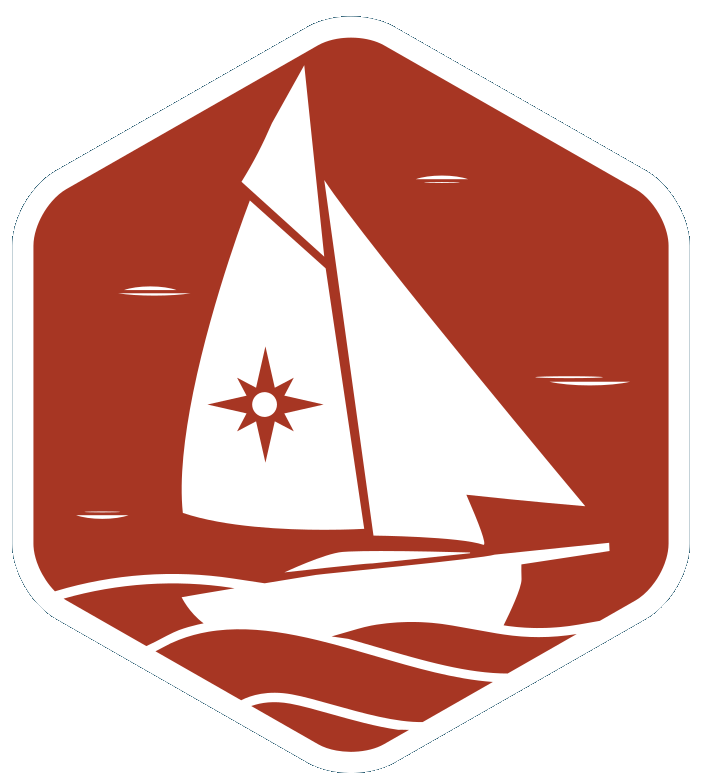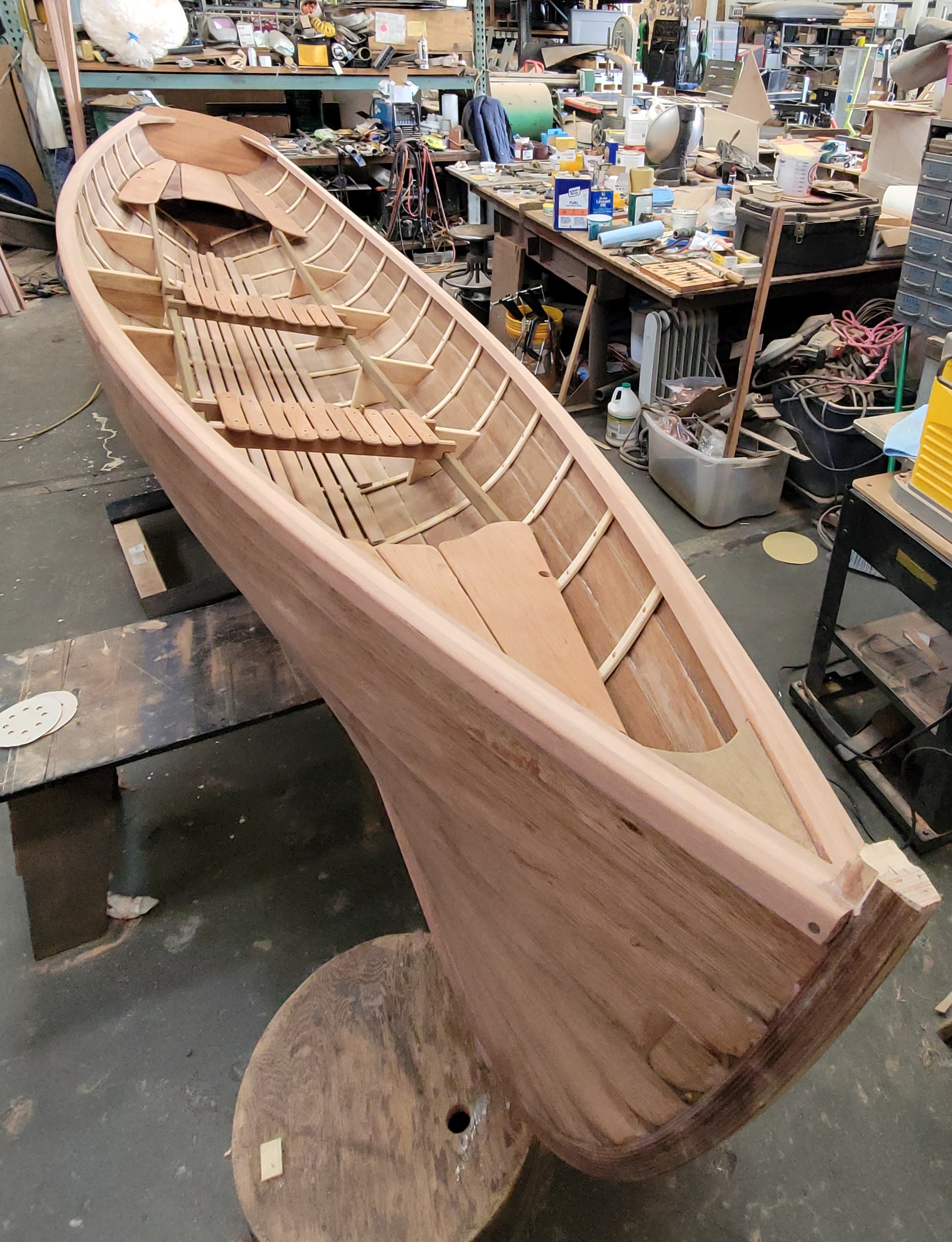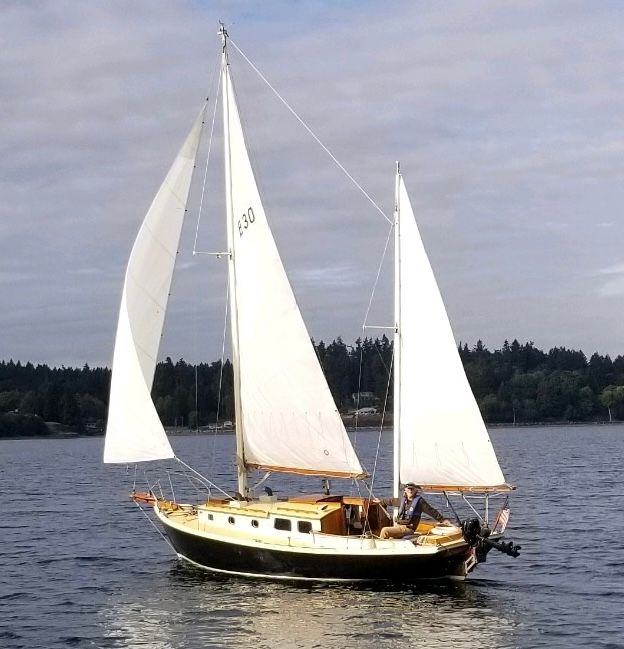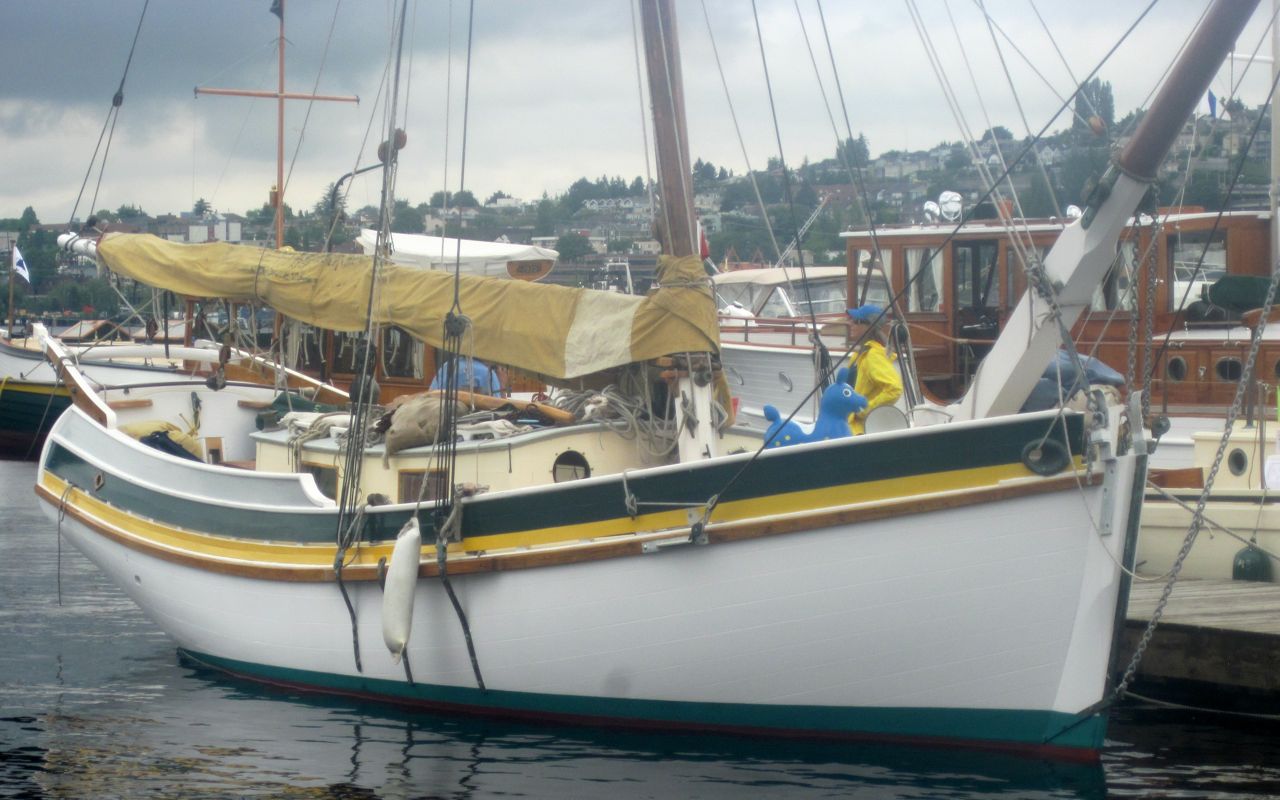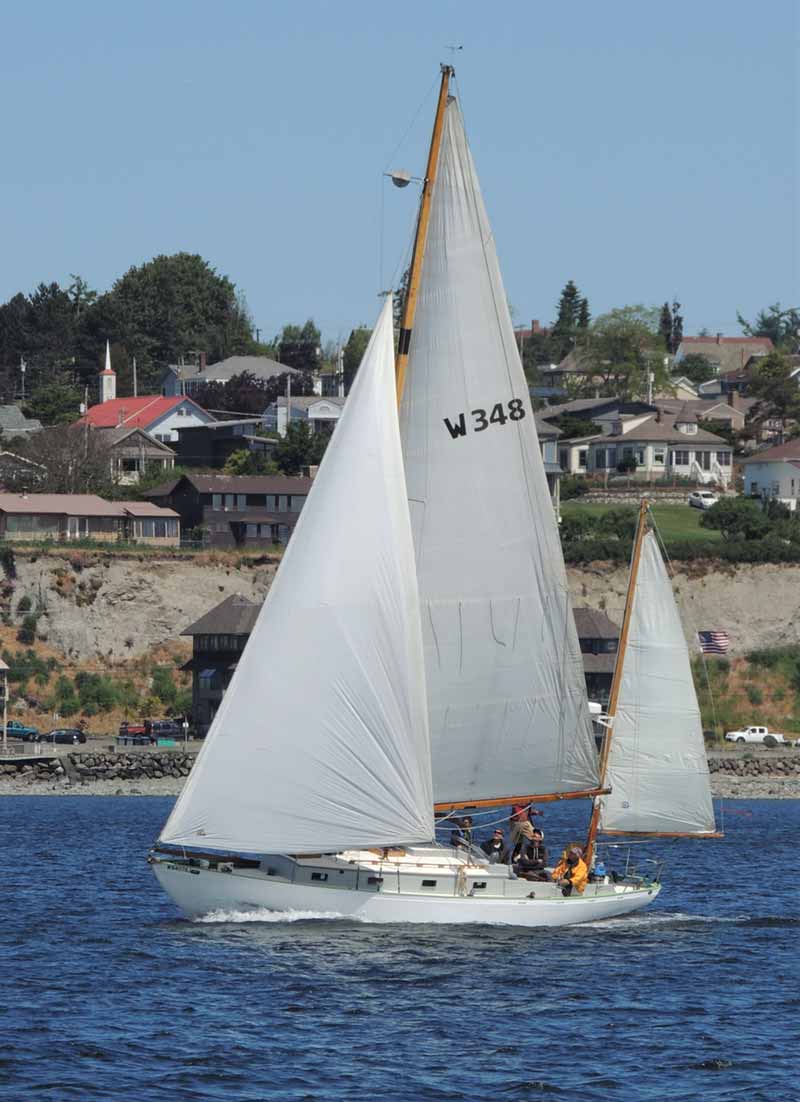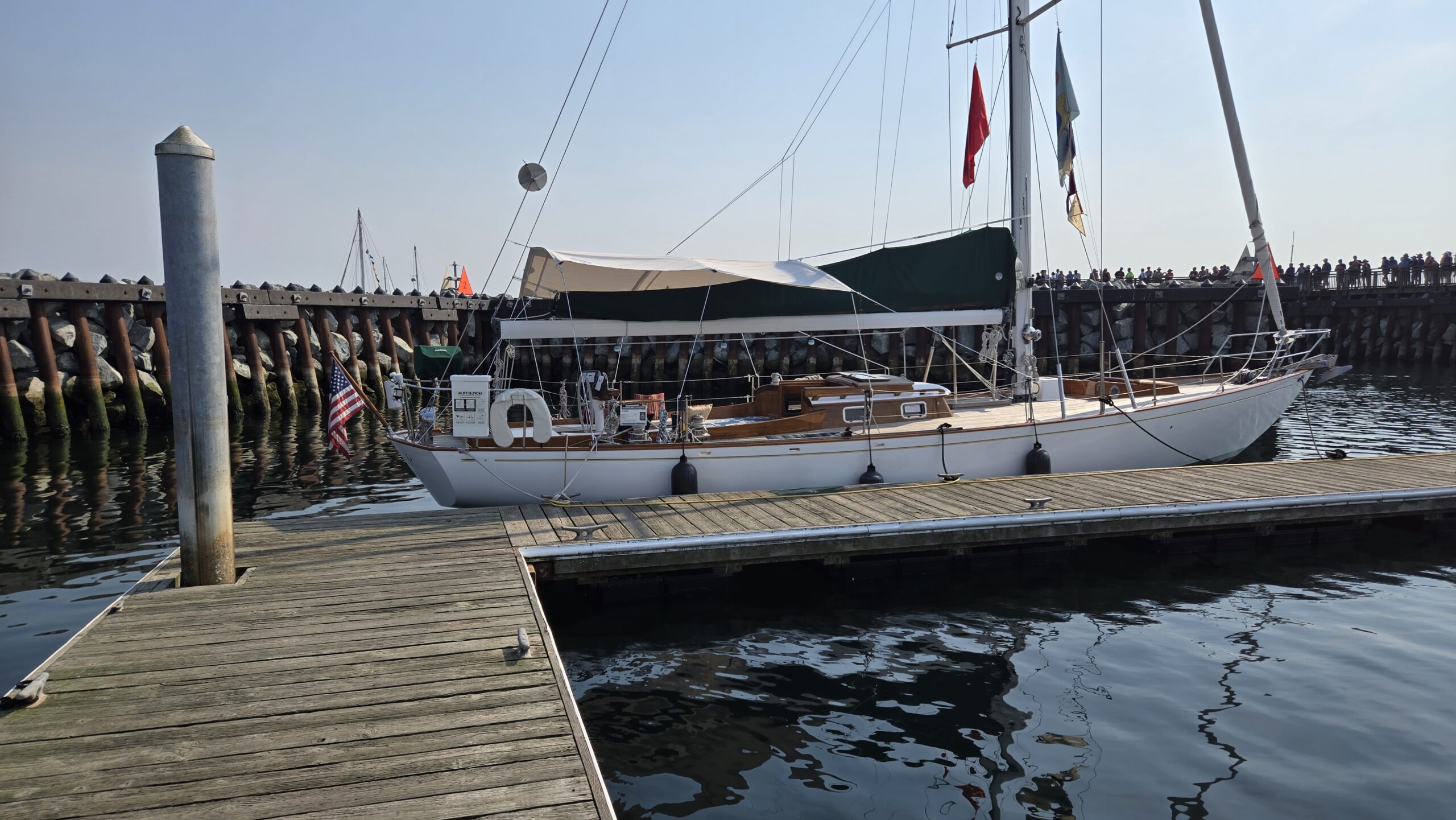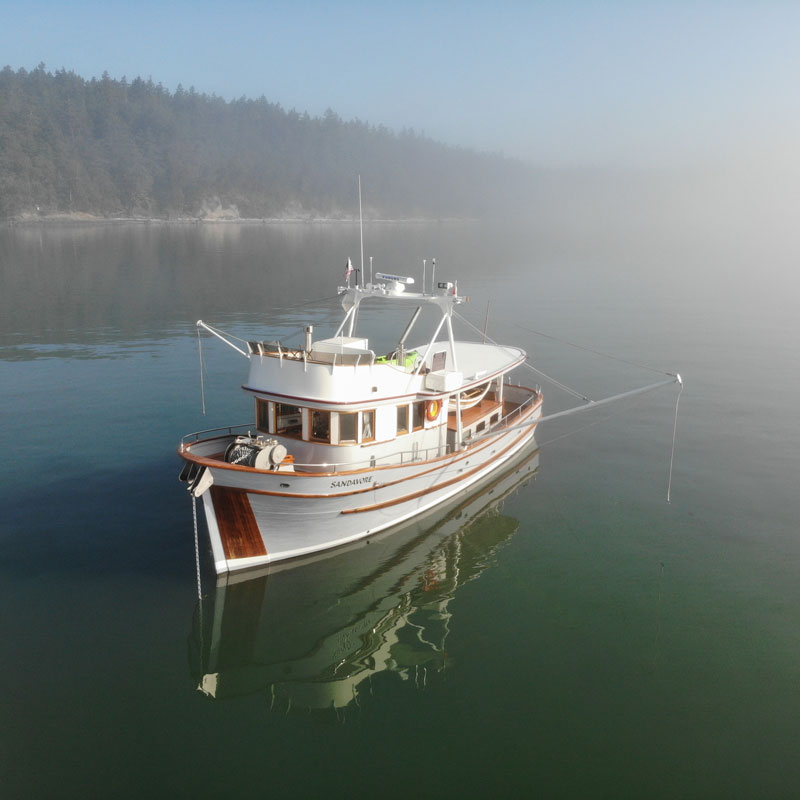
Sandavore’s keel was laid in 1962 during the fishing trawler heydays. Pacific Northwest shipyards could not churn these boats out fast enough for an industry hungry to fish. As “Barbara Jean II” she plied the cold waters for decades, having never left Canadian territory unless for short trips to Alaska. In 2004, Mr. Alan Dickinson purchased Barabara Jean II for restoring and rebuilding her into a pleasure vessel. Al was blessed with immediate access to the finest marina on Vancouver Island, and therefore had immense talent at his disposal. He began the project appropriately: by gutting her.
Nothing was overlooked.
Complete disassembly of the decks, fish hold, and all systems allowed removal of the engine and transmission to a dedicated machine shop. The keel-cooled Gardner 6LW locomotive engine was rebuilt entirely with all sub-components polished. The fish hold was converted into a stateroom with Alaskan yellow cedar beams, mahogany, and teak touches. All tankage was replaced with custom-designed aluminum and poly-welded tanks, and the overhead deck & flybridge station was shipwright designed. And the wood: the fine woodwork alone took over 5 years to complete and every design improvement of the boat was considered, consulted over, and implemented correctly.
She now has a 2000nm range and over 400 gal of fresh water capacity, plus a robust bow thruster, custom-articulating paravane stabilizers, and a discreetly installed suite of electronics. Visitors will note the Ken Douglas, copper riveted lapstrake skiff that sits in her cradle above the fish hold; this is allegedly the final hull made by Ken before he crossed the bar. As relatively new owners, we are still humbled and open-mouthed by Sandavore, her phoenix name. Sandavore has double meaning: the Isle of Eig in the Outer Hebrides has a small, self-contained community named Sandavore, and sanding- ever more sanding- is the nature of her beautiful existence!
She is dependable, comfortable for us, yet not indulgent. Her handling characteristics are predictably slow & steady, while close quarters maneuvering is surprisingly light, done almost entirely by bowthruster. We don’t consider ourselves owners, but rather caretakers of an increasingly rare example of a traditional fishing design long gone. We owe a huge debt of gratitude to Alan, who dedicated a large part of his life’s work bringing Sandavore into brilliant form, and the countless craftsmen and women who put their hands to her hull!
